Find Your Perfect Hydrangea
- Font size: Larger Smaller
- Hits: 8219
- 0 Comments
- Bookmark
There are so many options when it comes to hydrangeas that it can be a bit overwhelming at first. With all the different colors of flowers, styles of flowers, gorgeous bark (think winter interest) and leaf shapes, there is sure to be a hydrangea or two, or three that you must have in your garden.
Before you head out to the garden centers, I want to share a few basics about hydrangeas which will hopefully make finding your perfect hydrangea a bit easier. (See all the Showstopper Hydrangeas™.)
It’s all in the flower. Hydrangeas may be shrubs, but they are shrubs with multi-tasking flower power which can be enjoyed as is on the plant, or as cut or dried flowers. Unlike many other flowering shrubs, the spent flowers of hydrangeas are often quite attractive and can remain on the plant through winter. Not only do the flowers add color to the garden in both sun and shade areas when in bloom, they add texture and that hard to find winter interest so many gardeners are looking for.
Hydrangea quercifolia, is a rather versatile hydrangea. It does well in the sun as well as part shade. The multi –stemmed plant will continue to grow out and away from its base and can fill in large voids in the garden with ease. Or, if you like, cut it back to encourage a thicker, bushier growth habit. The leaves of the plant are as its name would indicate, reminiscent of oak leaves. Thick, large and firm, the leaves are almost as attractive as the flowers themselves which grow in a large, cone shape clusters. Starting off white, the flowers often turn pink to reddish rust color in the fall. The peeling and exfoliating bark is attractive as well. Quercifolia really does have it all; fabulous foliage, great bark and flowers that remain interesting even when the blooms are spent. Many quercifolias grow 4-6’ but I have seen some reach 7’ and over.
I love to work in oak leaf hydrangea in a long perennial border garden to add structure, height variation as well as winter interest to the design. Hydrangea quercifolia also does well on its own as a specimen plant or planted as a generous backdrop in the landscape.
Hydrangea paniculata, or often called panicle hydrangea, is a non-native hydrangea originating from Japan and eastern and southern China. This beauty also does well in sun or part shade and is proven to be a bit more cold hardy that other varieties which is ideal for our northern garden friends. A taller shrub, reaching 8-15’ it does best when allowed to grow in a clump formation but it can be trained to grow as a single trunked tree utilized in the landscape or a large container.
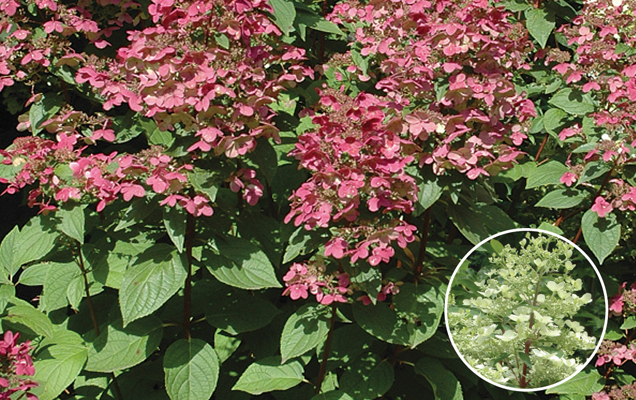
No shade garden is complete without a White Embers™ hydrangea. Its massive cone shaped flower heads have an open, lacey feel. The blooms start white, turn to pink and then deepen to a rich burgundy red in the fall; what a fabulous way to add color to the shade garden.
If there is bit of a mad scientist in you, you may love big leaf hydrangea, Hydrangea macrophylla, also called snowball hydrangea. The large mop head hydrangea popular with florists and often seen in silk flower arrangements can be grown in the garden with ease. A bit more susceptible to cold, some may require a bit of winter protect to ensure spring blooms. Often times, these plants are great for container gardens with the bonus of being able to move the shrub indoors in cold winter months. They also will protest when planted in hot, dry, exposed areas. A garden spot with morning sun, afternoon shade and moist soil serves this hydrangea best. For the tinkerer in you, adjusting the pH level of the soil changes the color of this shrub’s blooms. Acidic soil results in blue blooms and alkaline soil in pink blooms.
Macrophyllas are divided into two categories: mop head have the large, snowball blooms and lace cap. Lace cap have a lighter, elegant, more delicate look resulting from only a few of the perimeter petals opening on each bloom head.
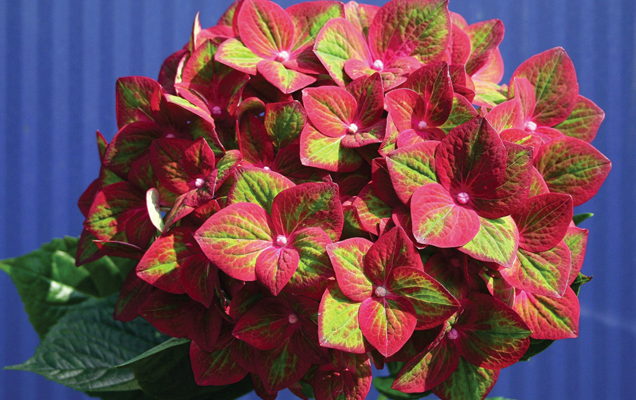
I am smitten with Butterfly Frolic™, a 5-6’ tall and wide shrub with fuchsia and green blooms that turn all green by fall. The large mop head flowers are a generous 6-8” wide adding a lot of punch to the shade garden. The changing bloom color of Butterfly Frolic™ is a lovely addition to a shade garden where blooms are harder to come by (compared to sunny gardens).
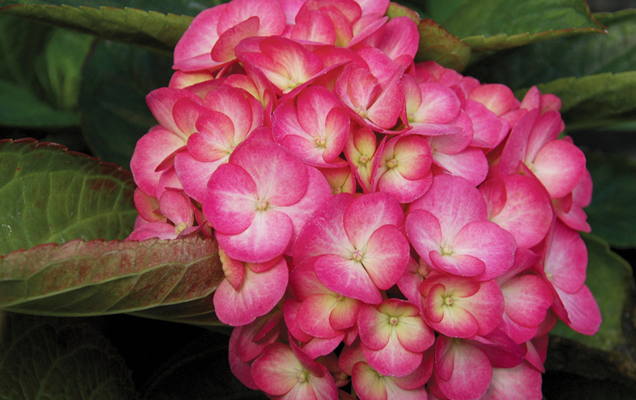
For a softer, more elegant feel I am drawn to That Rosy Bouquet™ with its rich pink and cream blooms which actually remind me of begonia flowers. Its lighter look is quieter and more relaxing; perfect for a garden spot where you head to unwind after a crazy day.
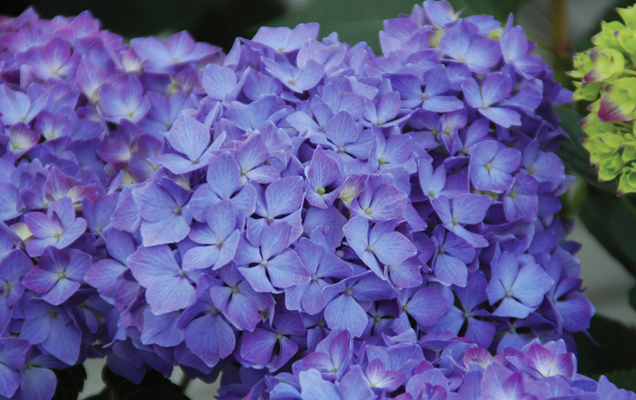
We cannot leave out a blue hydrangea! Luckily, if you are too busy or simply not ready to alter the pH level of your soil, Purple Bayou™ will reward you with blue flowers from late spring to until frost, with minimum soil acidity to darken to a deep blue violet.
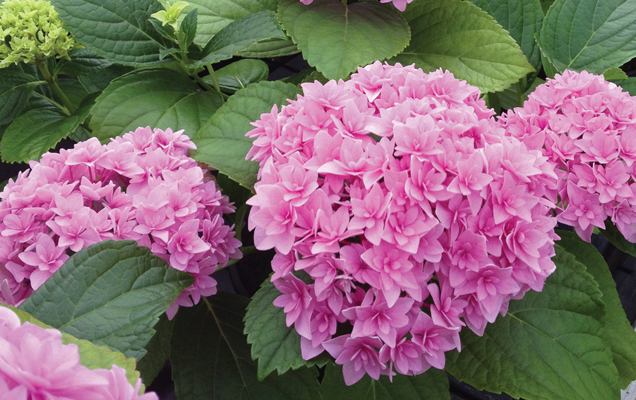
When I think of a cottage garden or a cutting garden, without hesitation I recommend Double Hot Pink™ hydrangea. Its delicate double blooms have star-shaped petals that bloom from late spring until frost.







